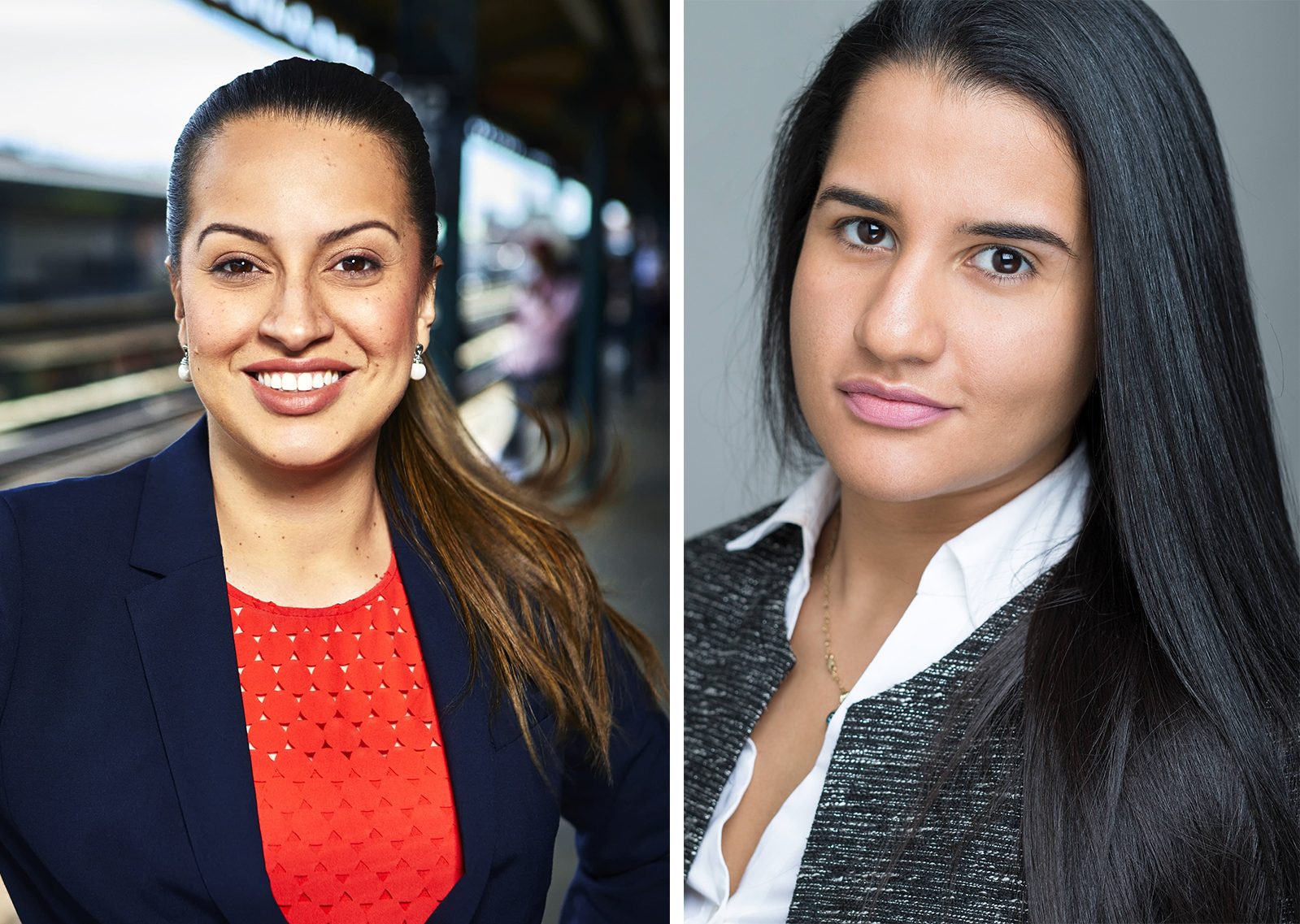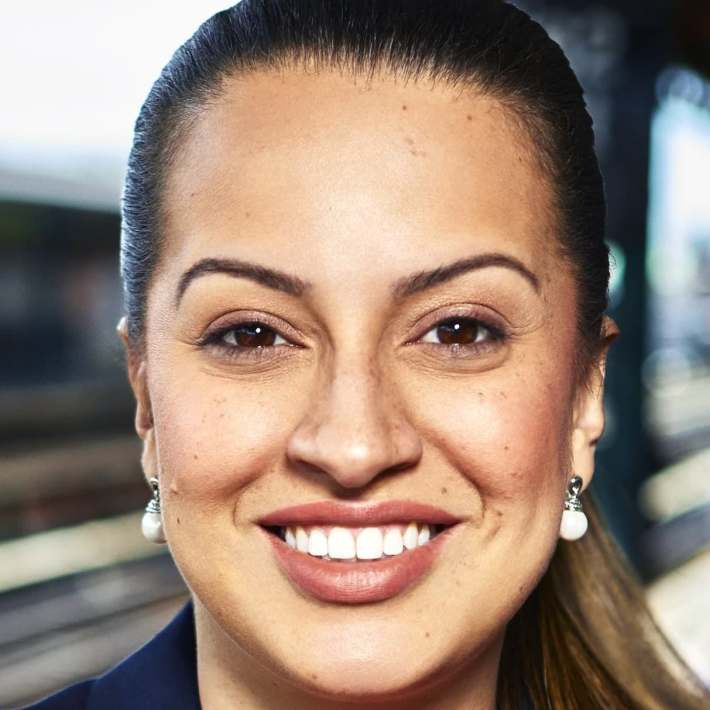We've been focusing on the State Senate, where insurgent candidates are running like never before, but we kick off our coverage of two hot Assembly primaries today with the 39th Assembly District in Central Queens. It's a contest between Catalina Cruz and incumbent Ari Espinal.
StreetsPAC endorsed Cruz over Espinal, who, insiders say, is too closely tied to the Queens machine.
Here are the candidates' answers, unedited, with a map of the district at the bottom of this post:
Do you support congestion pricing in New York City? If so, in what form? If not, why not?
CRUZ: Yes, a core issue on my platform is securing the funding the MTA desperately needs to make transportation more reliable for our community. Therefore, I support reliable revenue sources like:
- congestion pricing.
- demanding increased accountability to ensure that these funds are not diverted for other purposes.
- increasing the taxes on the 1% and protecting existing ones.
Congestion pricing will presumably also help our environment by inducing more people to use mass transit.
ESPINAL: I am a strong supporter of congestion pricing — having drivers pay a certain amount of surcharge in order to enter certain areas/zones that are generally heavily trafficked for certain periods of time. I support this initiative, because congestion pricing is one of few funding mechanisms that can rapidly generate revenue, which we can use to help improve the infrastructure in our community that we have in the status quo. With congestion pricing, traffic in many parts of our community can finally be more regulated, and this gives a greater incentive for commuters to choose greener options, such as subways, bus services, bikes, etc.
Subway ridership is down and New York's buses are slower than ever. What will you do in Albany/are doing in Albany to fix it?
CRUZ: The decline of the MTA did not happen overnight. For more than 30 years, funding for the system (including funding for capital projects) has been cut at the state and city level.
Ridership has increased, while maintenance spending has declined, directly impacting the MTA’s on-time performance. Working families in our community rely on public transportation to get to work, to get to school, and to get around our city. The never-ending delays on trains and buses are costing us our livelihood and forcing our community to use less environmentally friendly forms of transportation.
The MTA must work to immediately decrease the existing times allotted for repairs to be made, and concentrate on repairs that affect on time ridership, rather than cosmetic upgrades. This will help reduce the need to seek out other less environmentally friendly modes of transportation and alleviate the congestion we are experiencing.
Furthermore, I stand behind supporting integrated multimodal transportation like the integration of multi-use trails which would promote bicycling and walking. Further, I also support promoting the deployment of zero emission vehicles, expansion of programs like car sharing, and limiting truck traffic on local roads and highways.
I also support measures to alleviate congestion. According to the annual INRIX Global Traffic Scorecard, New York City is the third most congested city in the world in terms of traffic and the second worst in the United States- which will cost us over $100 billion across the next five years. To help alleviate environmental and financial concerns, I would propose introducing hybrid buses to make our modes of transportation more environmentally friendly, and supporting congestion pricing.
ESPINAL: With congestion pricing implemented, we can create a greater incentive for commuters to choose greener options, such as subways and bus services, as well as having more means to pay for improvements to reliability and accessibility.
We can also introduce more bus lanes throughout our community and make the MTA select bus services more widespread to help make bus services run faster, smoother, and more efficiently.
MTA capital projects routinely cost five times as much as transit projects in other cities. How will you exert pressure on the MTA to control costs?
CRUZ: The MTA, as it exists, must be broken up into several agencies capable of managing smaller systems. Control over the City’s transit system (train and buses) must be handed over to New York City. The existing debt must be refinanced at a lower rate in order to allow for the Authority to spend more on repairs and less on paying back its existing debt.
I would propose caps on costs and times allotted to make repairs and periodical oversight over the contracts.
ESPINAL: One way I can help control costs is by working directly to create realistic budgets and project timelines. Additionally, I will push to ensure that a team of professionals are in charge of each project from the beginning to the end. That way, we can be sure to control the costs and the accountability for any current and future projects within the MTA.
How would you make streets in your district safer for walking and biking? Do you support the city's construction of protected bike lanes? If so, why? If not, why not?
CRUZ: I have developed a street safety plan so that we can work together to make pedestrian and cyclist safety a key priority and save lives by:
- Reinstating New York City’s speed safety camera program around our schools and expanding it to additional key locations like parks and playgrounds to better protect our community.
- Increasing penalties for drivers who flee the scene of a hit-and-run, and placing significant criminal and financial consequences for negligent and liable drivers.
- Adding time to pedestrian walk signals, where needed, to provide seniors, children and people with disabilities with adequate time to cross.
- Ensuring that there is a safe route to school for every child. School redistricting plans must account for the safety of walk paths for children and their families, ensuring that children are not required to cross arterial thoroughfares in order to get to and from school.
- Collaborating with the NYC Department of Transportation to develop a plan to implement new protected bike lanes on every street by 2023. We need to upgrade existing Class II and III lanes to Class I. All milling and repaving projects should include an automatic safety review to evaluate potential pedestrian and cyclist safety improvements.
- Working with doctors and medical ethicists to evaluate fair ways of re-testing drivers to ensure all motor vehicle operators can drive safely. We must remove drivers with potentially dangerous medical conditions, declining hand-eye coordination, or fading cognitive functioning, while also protecting doctor-patient confidentiality.
- Implementing Select Bus Service in transportation deserts in our community, especially in sections of Corona and Elmhurst.
- Passing comprehensive congestion-pricing legislation to fund much-needed repairs to our mass transit system while reducing harmful traffic congestion.
ESPINAL: Lowering the speed limit, delaying green lights, implementing speed cameras, and constructing overhead bridges are several ways to make our streets safer for everyone. Implementing protected bike lanes is one way that we can make our streets safer for biking. I personally support our city for taking the initiative to construct protected bike lanes. However, each construction should be examined on a case-by-case basis so the location makes sense in terms of traffic patterns and local businesses.
What is the single biggest thing the state should do to get reckless drivers off New York City streets?
CRUZ: We should suspend licenses and increase criminal penalties for reckless drivers.
ESPINAL: The easiest thing that the state should do to get reckless drivers off New York City streets is to renew the speed cameras that were recently turned off due to lack of action by the State Senate. This program saves lives, and the GOP-controlled Senate is playing politics instead of doing their job. Other things that can be done to get reckless drivers off the road is making drivers re-take the drivers exam every 10 years and expand the existing speed camera program so that we can do as much as we can to make sure every reckless driver pays for their behavior.
Is there a safety, design or enforcement strategy that is not being deployed that you think is vital to making our roadways, sidewalks and public spaces work better for everyone? (Hint: This is a "visionary" question, so don't think small.)
CRUZ: Amsterdam has had great initiatives to improve street safety. I would push to implement legislation and allocate funding for similar initiatives that have been proven to work, for example:
- Incorporate street safety education into schools’ curriculum — preschool through high school.
- Pass legislation to provide driver’s licenses for all, regardless of immigration status (it is an issue of safety).
- Use visible red asphalt for bike lanes
- Re-test all drivers every 5 years
ESPINAL: In Japan, installing overhead bridges is a popular way to improve pedestrian safety. It links one side of the street to the other and has significantly reduced civilian casualties. If we can implement infrastructure like this in our community wherever appropriate, then we can make our roads safer for pedestrians.
In Europe, many roundabouts have been implemented to help make traffic run smoother, faster, and more efficiently. If we can construct some wherever permissible, that can help to make our traffic move quickly.
The MTA subway systems have overhead real-time trackers that say exactly how many minutes until the train comes, as well as whether a specific train will have delays. If we can impose a system like that for our bus services, that will be more informative to our commuters and help them to plan their commute.
We can construct multi-level parking complexes (like the parking spaces seen in malls) to keep cars parked off our roads and construct more protected bike lanes to create an incentive for people to ride their bikes. A permit-system can be used for locals that use the parking complex and a fee can be collected for visitors, and all of these fees can go to other infrastructure projects and safety.
How often do you bike to the office (be honest)?
CRUZ: I walk since my office is 3 blocks from my house.
ESPINAL: Whenever the weather is permissible, I ride my bike or use my rollerblades to my office. Otherwise, I resort to subways and bus services as my method of transportation.









